This 1931 Bedford bus was the first of its kind!
Posted by Chris Graham on 9th February 2024
Zack Stiling a very rare survivor; the original, 1931 Bedford bus that recently returned to the rally circuit after a period of hibernation.

1931 Bedford bus: Chassis 100001 is the first bus that Bedford ever made.
It’s not unheard of for a manufacturer to exaggerate its products’ achievements or qualities in a bid to drive sales but, where Bedford is concerned, there was no overstatement in its simple but memorable slogan ‘You see them everywhere.’ For much of the 20th century, the marque was celebrated the world over for the quality and variety of its commercial vehicles, but its rise to the forefront of the industry was very sudden. While the likes of AEC, Dennis and Leyland were all well established by the 1920s, the first Bedfords did not appear until 1931.
Despite coming onto the scene as the Great Depression was tightening its grip, Bedford’s arrival was pretty risk-free because its parent company was General Motors, which was just commencing its 77-year reign as the largest car-maker in the world. It also happened that more and more businesses were taking it upon themselves to transport goods themselves rather than using the railways as a middleman, so it was launched into an expanding market. Besides which, the first Bedfords were not all-new vehicles but slightly updated evolutions of the Chevrolet commercials which had been built in Britain since 1923.
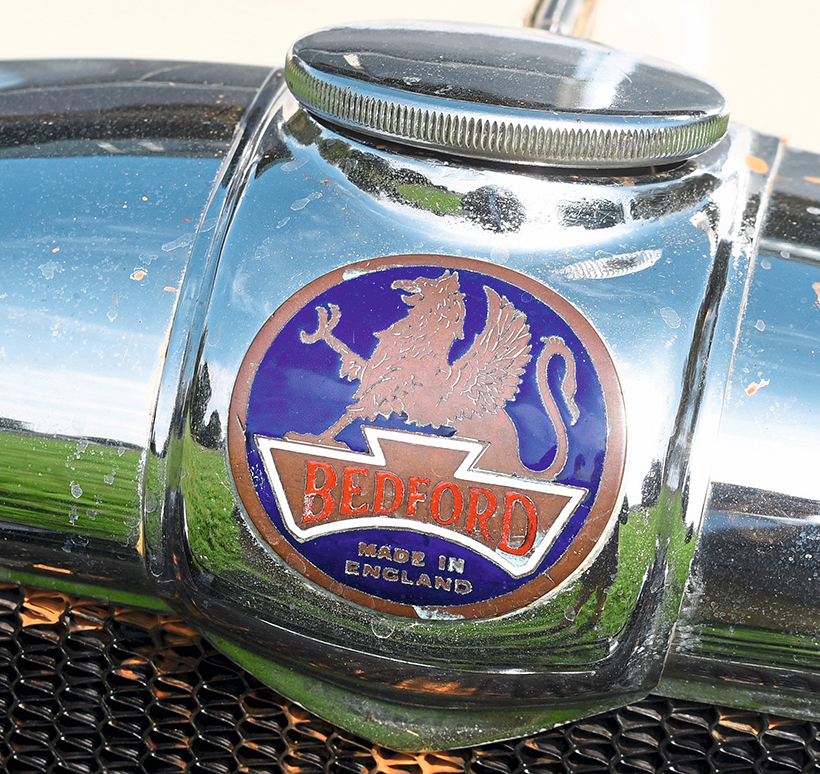
The famous griffin badge identified the Bedford as a product from Vauxhall.
The first use of the Bedford name by General Motors actually occurred in 1912, when Buicks sold in Britain were marketed as Bedford Buicks, but General Motors didn’t make serious in-roads into Britain until after the Great War. Chevrolet light commercials proved popular over here; in 1923 General Motors built a factory in Hendon in which to assemble Chevrolet one-tonners, thus entering a market which until then was dominated by Ford, although, within the space of a year, Morris Commercial would become a major force.
While business ticked over steadily at Hendon, General Motors continued its expansion by purchasing Vauxhall and its Luton factory in 1925. Then, in December 1928, it really stole a lead over rival commercial-vehicle makers by bringing out the 12cwt Chevrolet AC and 30cwt LQ, which featured, of all things, a six-cylinder engine.
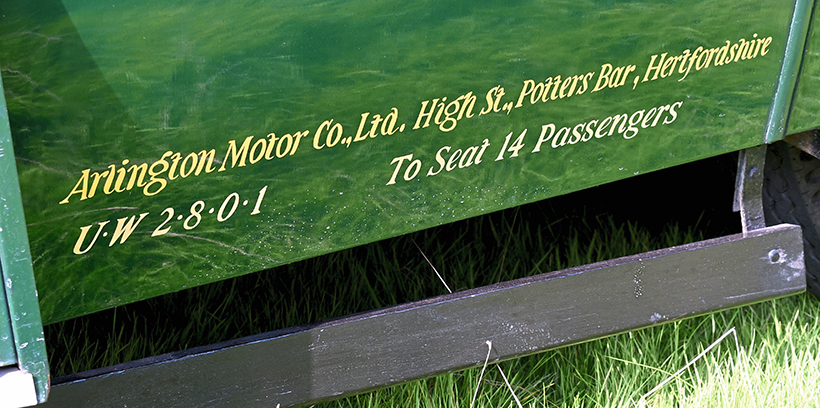
The Arlington Motor Co supplied the Bedford new, then bought it back and restored it during the 1960s.
In its original guise, the famously long-lived ‘Stovebolt’ six – American Chevrolets continued to use it until 1962 – was of 3180cc and produced 44bhp. With a four-speed gearbox, the LQ was capable, fully laden, of about 50mph, a speed unrivalled by pretty much any other British-built commercial. It was low-priced, too, and demand was almost instantaneous and so high that Chevrolet had to invest in larger facilities. Thus, in 1929 a new factory was constructed next to the Vauxhall plant in Luton, and the Chevrolet Bedford name was used.
Quite why General Motors abandoned the Chevrolet name for its British commercials is not known, but Bedford was a sensible enough choice and the first lorries so-named appeared in April 1931. While the Chevrolet LQ continued in production for the remainder of the year, the first Bedfords were companions to it, outwardly similar but with a two-ton payload. There was a short wheelbase model, the WHG, and a long wheelbase, the WLG.
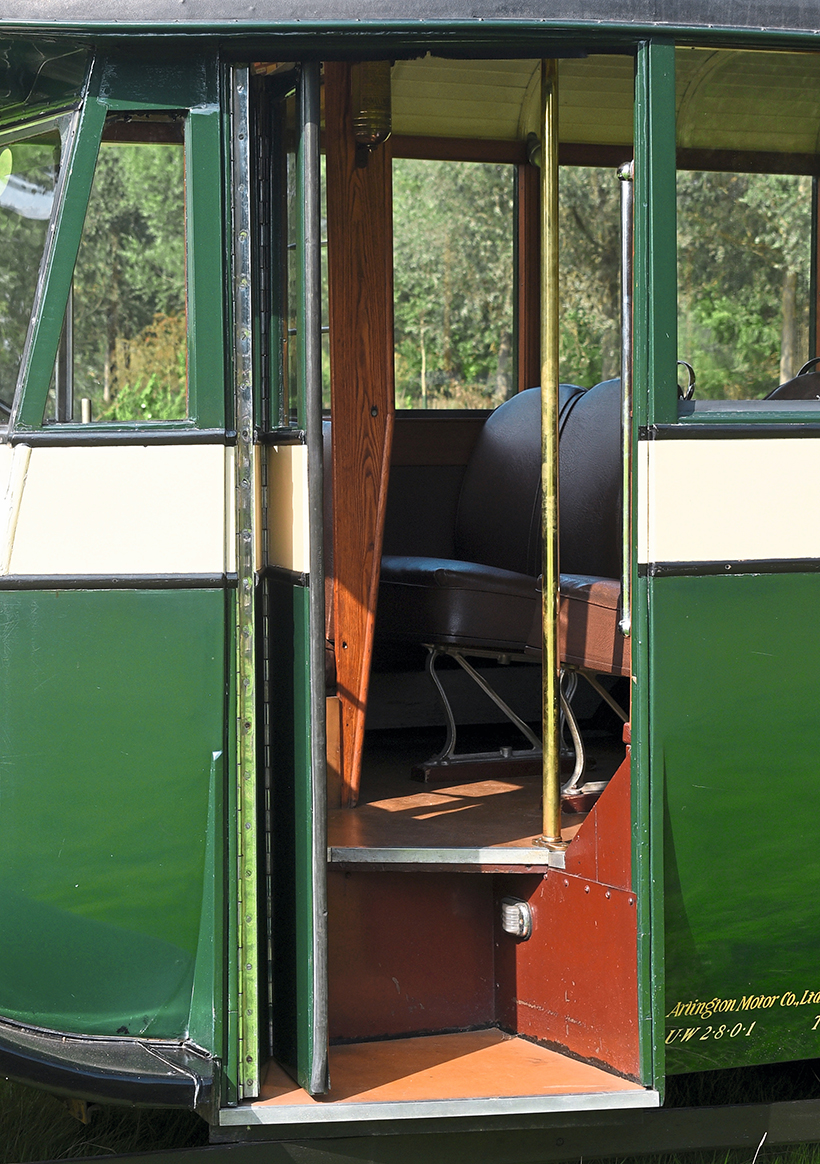
The front door is controlled from inside, by the driver.
Although mechanically and visually similar, a more rounded radiator and wheels which were vented rather than solid discs helped distinguish the new Bedfords from the Chevrolets. The famous griffin badge, as used on Vauxhalls and dating back to a 13th-century coat of arms, was also used. The engine, too, was modified with full-pressure lubrication and four rather than three main bearings. Curiously, Chevrolet in America continued using splash lubrication for many years to come, but it might well be that CE King, Vauxhall’s Chief Engineer and designer of the OE-type overhead-valve engine as used in the later 30-98s, baulked at the thought of anything so crude being used on a product with which he might be associated. An entirely new rear axle with twin wheels helped with the Bedford’s heavier payload. They were barely more expensive than the Chevrolets, which made them extremely attractive commercial prospects.

This bus spent its first 37 years in preservation at Arlington’s Potters Bar depot.
The two-ton lorries sold well, but if you mention ‘Old Number One’ in Bedford circles, you would not be referring to one of them but to chassis 100001, the first ever Bedford bus, which graces these very pages. It will be noted that Chevrolet’s catalogue had listed a fourteen-seater omnibus on the LQ chassis, alongside a meat van, box van, lorry with tilt and two-stretcher ambulance. Unlike the van and lorry bodies, the construction of bus bodies was outsourced to local coachbuilders, but the catalogue description suggests some degree of uniformity as it described a front entrance door controlled by the driver, a rear emergency door, spring frame seats, opening windows, four interior roof lights and a step light. It was priced at £390, compared to a basic chassis price of £190.
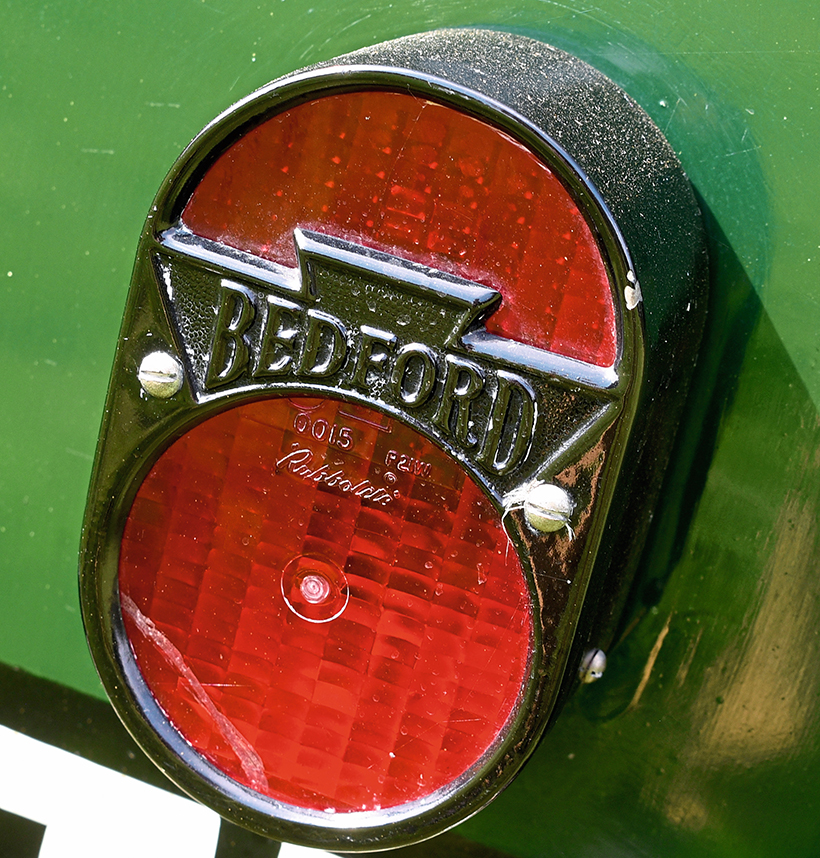
The distinctive Bedford rear light is an attractive detail.
Introduced in August 1931, the first Bedford buses were built on the same chassis as the WHG and WLG, but were designated the WHB and WLB. The WHB, with its 131-inch wheelbase, was intended for a 14-seat body, whereas the 157-inch WLG was conceived as a 20-seater.
Old Number One is a WHB 14-seater with engine 4000001 and was bought at the Vauxhall Heritage Collection auction in 2020 by Mark Smith of Maulden, Bedfordshire, who also has an impressive collection encompassing motorbikes, cars, tractors, light commercial vehicles, buses and steamers. Mark’s maternal grandfather was an agricultural contractor who provided steam threshing services, and an interest in mechanical objects runs through the veins not just of Mark but also of his sons, James and Tom, and his grandchildren.
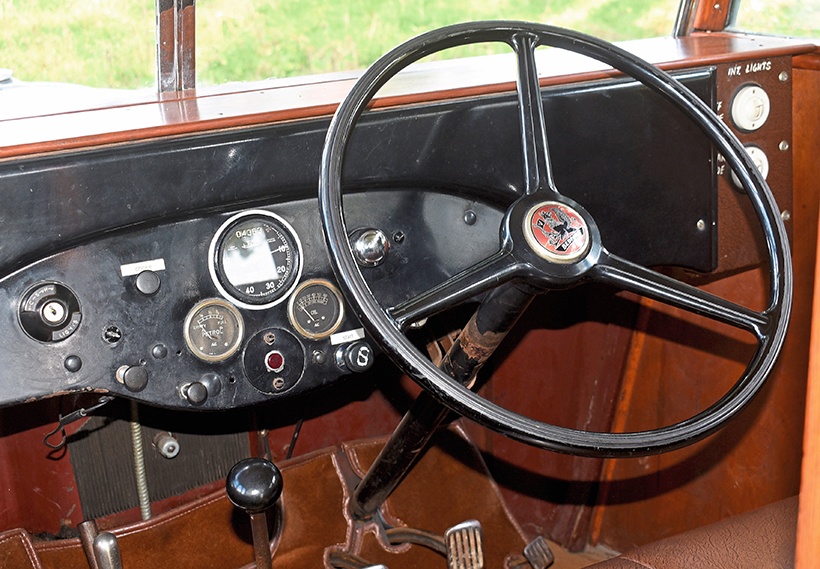
The steering has been described as ‘easy, if not especially precise.’
“Going back to when I got married,” he says, “I did as a lot of people do and would buy a motorcycle or car to restore, but something better always comes along and, before you know it, you’ve got a barn full of old relics. The first bus we bought was an ex-Maidstone & District AEC Reliance with Harrington bodywork, and later, after a couple of years, in 2015 we bought a Dennis Lancet. The Bedford came along in 2020.
“We wanted a smaller bus for if we wanted to go out as a family, and since it’s not too big it’s easily transported. We were keen to buy it a) because it came from just up the road and b) because it’s chassis number one, so you can’t get an earlier one than that. Thirdly, I’ve now got one bus from the 30s, one from the 40s and one from the 60s, so I’ve got a good range from through the years.”
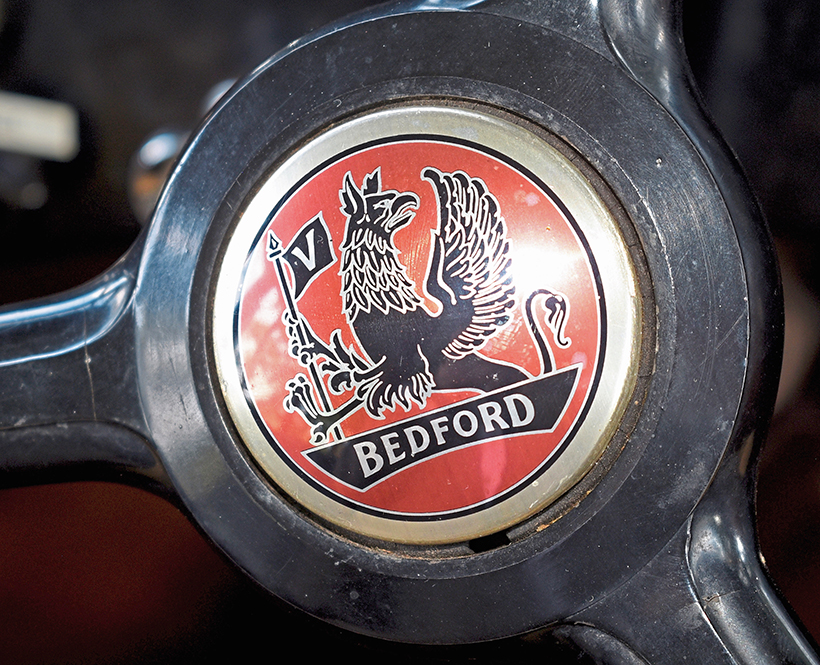
The first use of the Bedford name was on the British-market Buicks of 1912.
Number One was originally sold through the Arlington Motor Co of High Road, Ponders End, near Enfield, where it may have seen brief use as a demonstrator, having been bodied by the Waveney Co of Oulton Broad, near Lowestoft. It was naturally the first Bedford bus to be handled by Waveney and Arlington, but both firms would go on to develop a close association with Bedford coaches. Arlington would be a leading dealer for many years, although Waveney would later turn its attention primarily to Commers.

Bakelite switches are a charming period detail.
The first owner was John E Woodham of Melchbourne, a tiny village 14 miles north of Bedford. The Melchbourne Flyer, as it became known, operated a local bus service for an impressive 21 years and always looked smart, even if it had lost its bumper by the early 1950s. The plain black bumper added during its restoration is probably not of the original type, as most other Bedford buses of the period had twin horizontal bars turned in at the edges. After 1952, it performed a number of non-PSV duties and was sold by Woodham before entering preservation.
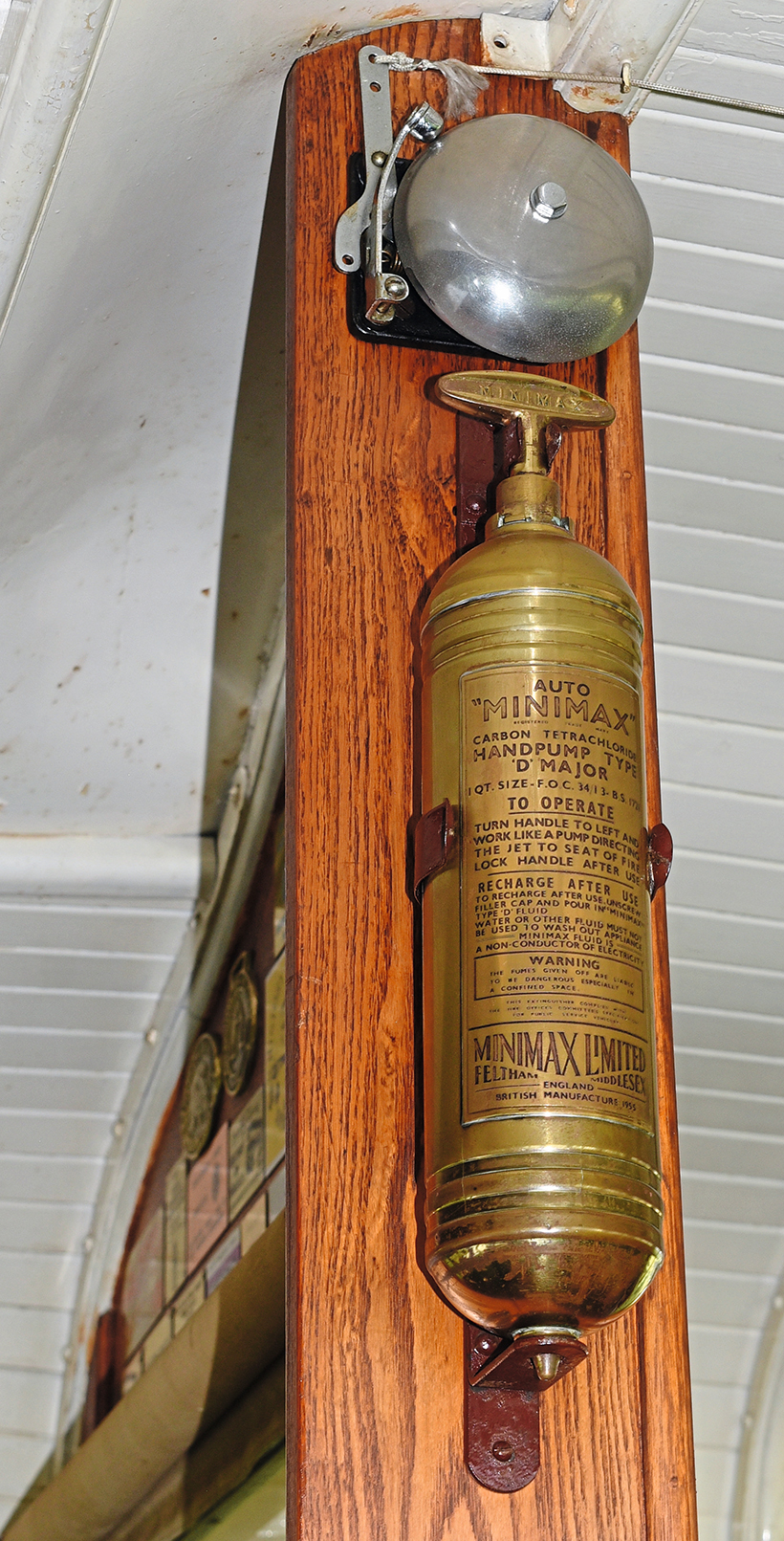
A period fire-extinguisher and hand-operated bell add to the character.
It seems to have fulfilled some interesting purposes in the 1950s, according to the tales told to Mark by the older visitors to transport rallies in the Bedfordshire and Hertfordshire area, who remember seeing it when it was in service. Apparently, it had been used for taking villagers into Bedford on market day and ‘it was not unusual to see it with chicken cages on the roof’. The story then goes that it was found by some enthusiasts on a farm, where it was being used as a chicken coop.
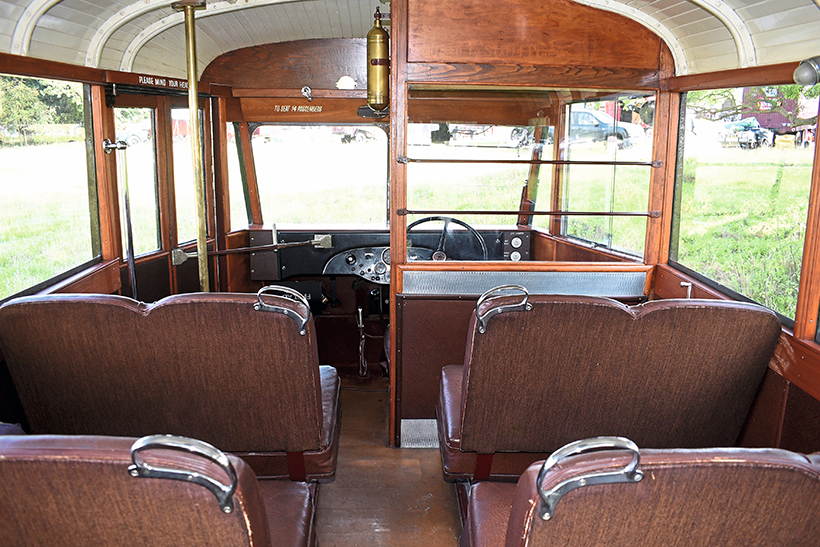
The passenger space is pleasant, light and airy.
This part of its history has not been substantiated and who those preservationists were or exactly what they did with it is not known, but it can’t have been in too bad a condition because it was only 1961 when the Bedford was bought once again by the Arlington Motor Co, and after a light restoration it completed the first ever HCVC London to Brighton Run in 1962, sporting a very Noddy-esque colour scheme of bright yellow with red wings and chassis and a broad red stripe on which was emblazoned ‘Bedford’ in white letters. By the end of the 1960s, it had been repainted in a more sober dark green with black wings and red chassis.
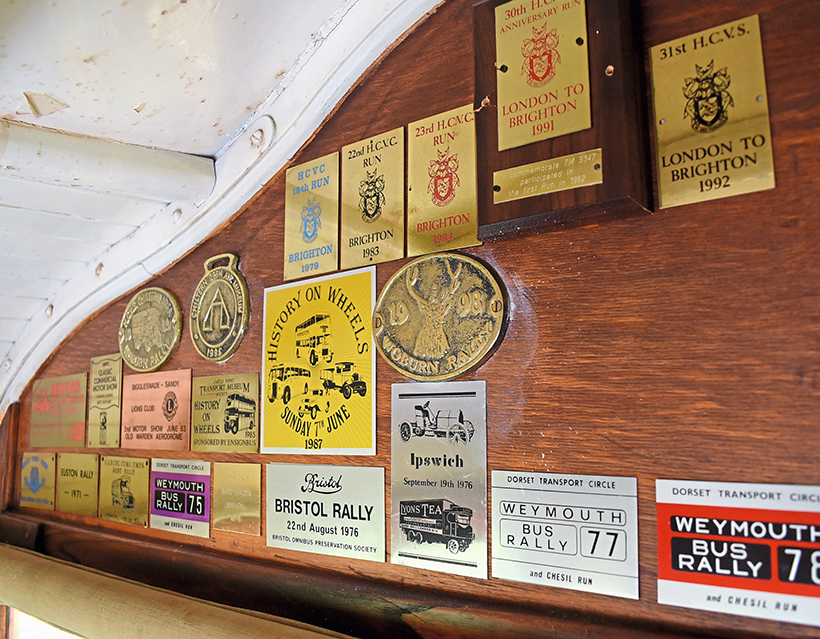
The Bedford amassed an impressive collection of rally plaques between the 1960s and 1990s.
The Bedford subsequently travelled far and wide, participating in many more rallies over a period of more than 40 years, including the Historic Commercial Vehicle Display at the 1968 Essex Show, the 1971 Euston Rally, Weymouth and Bristol Bus Rallies and several more London to Brightons. In addition to these, it had a minor role in the 1975 television adaptation of Dorothy L Sayers’ Five Red Herrings and was used in Bedford’s own brochures and advertising material. Arlington also used it to promote its business at shows, and if there was to be a meeting with a client, the Bedford could be expected to go out and take them to and from the showground.
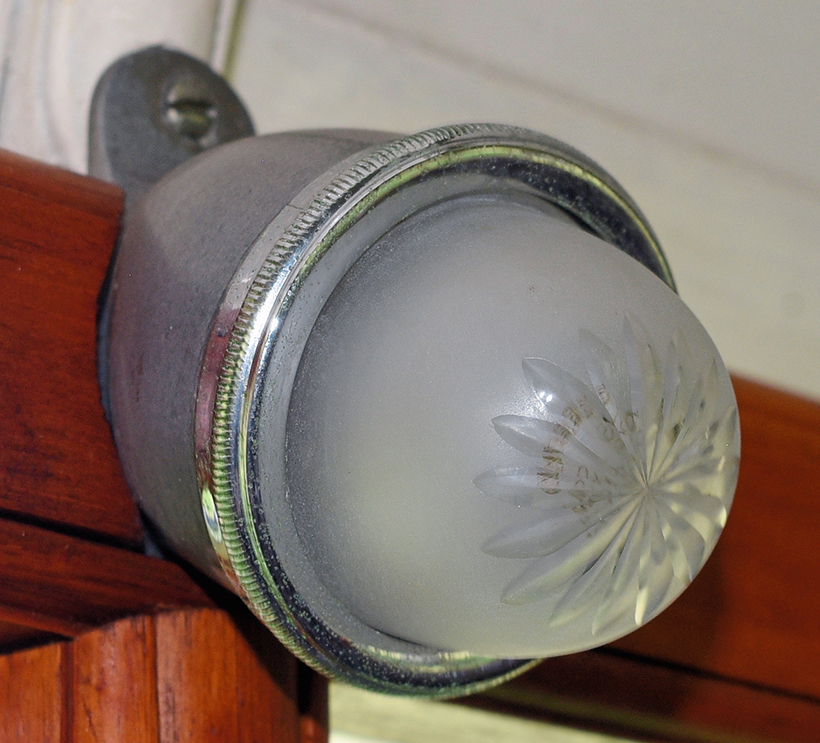
Cut-glass lamps help to cultivate an attractive environment
At some point, the Bedford was repainted again in a livery more closely resembling that worn during Woodham’s ownership. This most likely took place when Arlington relocated from Ponders End to Potters Bar and had to update the sign-writing.

The rear door is for emergency use.
In 1999, Arlington sold it to Vauxhall, which added it to its Heritage Collection, but it appeared not to have been on the road after 2008. When Mark bought it, it hadn’t been run for some time. He says, “Since we’ve had it, it’s had light recommissioning – just mechanical bits and pieces, engine, fuel tank and radiator work, and so on and so forth, but generally it’s as it was.”
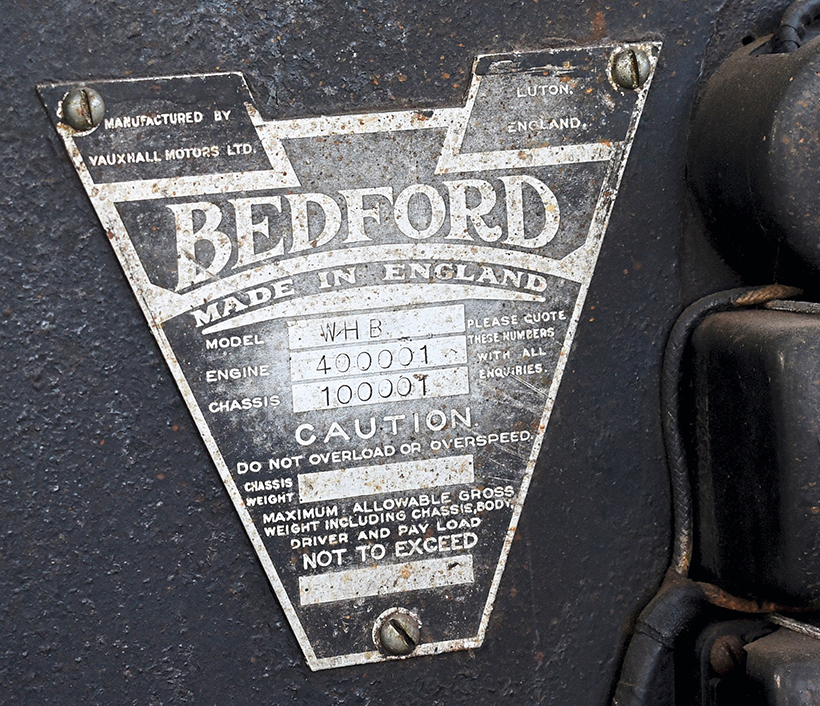
The chassis plate includes the magic number, 100001.
With the Smith family, it’s now a regular sight at Bedfordshire and Hertfordshire rallies, but it sometimes goes further afield. “We took it to a show near Norwich this year, but on a trailer. While we were out, we took it on a run to the Norfolk coast and over the ferries on the rivers in the Broads, so we probably did 30 or 40 miles on our little jolly around the Norfolk and Suffolk area.”
It’s still bringing back memories, too. “A few weeks ago, at a show, an old chap who must have been nearly 90 said, ‘Ooh, I used to go to school on that,’” Mark remembers.
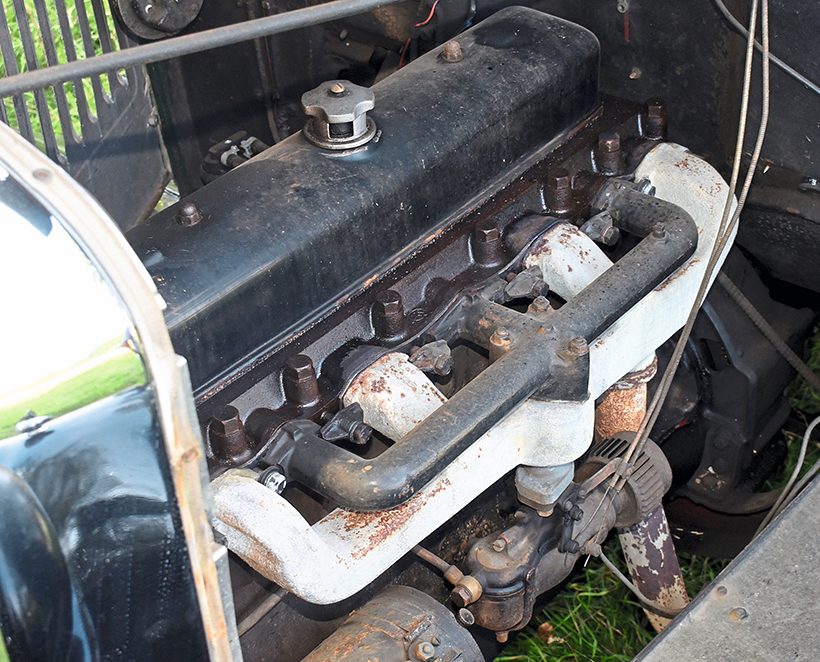
The Chevrolet-derived straight-six was famed for its torque and overall performance.
As the oldest of Mark’s buses, it perhaps proceeds at a slightly more relaxed pace than his Dennis and AEC, but its six-cylinder nevertheless offers outstanding, almost incredible, performance for the period. “It will nip along at 45mph, maybe 50 at a push. It’s quite happy trundling around the lanes at 30mph, but when you’re driving you’re sitting just to the right of the centre line of the bus – you could still have someone to the right of you on your seat. You get used to the crash gearbox and with the rod brakes, while you’ve got a good pedal, you’ve got low efficiency and you have to brake two miles before you want to stop. Obviously, being that old there are no creature comforts, although it does have wind-down windows at the sides and at the back. There’s no heating, so it’s nice in summer but rather draughty and cold in the winter.”

The bus has been restored in what is thought to be its original colour scheme.
If the braking is a little dated today, in its time it was nothing to be sniffed at, as it recorded a 64% Tapley reading during a Bus & Coach road test. Even so, the WHB was an anomaly in the Bedford success story. Even with its low guide price of £250, demand for 14-seat buses was dwindling, and while the 20-seat WLB proved popular, the WHB was dropped in 1933 after just 102 had been built. Being so rare, any other survivors, if there are any, are worth getting excited about, but, when all is said and done, there’s only one Old Number One.
This feature comes from the latest issue of Old Glory, and you can get a money-saving subscription to this magazine simply by clicking HERE
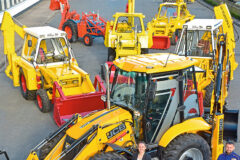
Previous Post
Iconic JCB celebrates its 70th birthday in style!
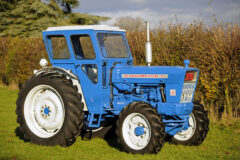
Next Post
1975 Roadless Ploughmaster 75 wonderfully restored



